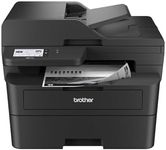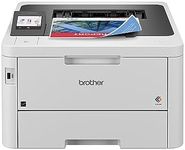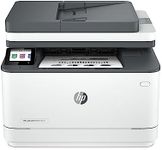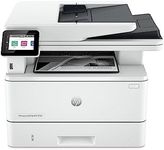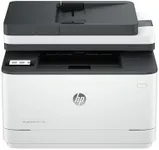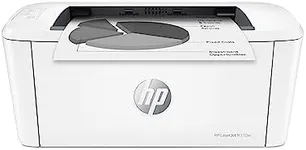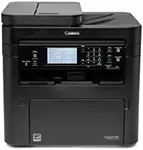Buying Guide for the Best Laser Printer With Cheapest Toner
Choosing a laser printer with the cheapest toner is a smart move if you want to keep your printing costs low over time. While the upfront price of the printer is important, the real savings come from how much you spend on toner cartridges and how often you need to replace them. To make the best choice, you should look beyond just the printer's features and focus on the long-term cost of ownership, which includes the price and yield of toner, as well as the printer's efficiency and reliability. Understanding the key specifications will help you find a printer that matches your printing habits and keeps your ongoing expenses to a minimum.Toner Cartridge YieldToner cartridge yield tells you how many pages you can expect to print before needing to replace the cartridge. This is important because a higher yield means you’ll be buying toner less often, which can save you money and reduce hassle. Yields are usually divided into standard, high-yield, and extra-high-yield cartridges. Standard yield is best for occasional printing, high-yield is good for regular home or small office use, and extra-high-yield is ideal for heavy-duty or business environments. To pick the right one, think about how much you print each month—if you print a lot, a printer that supports high or extra-high-yield cartridges will be more cost-effective in the long run.
Toner Cartridge PriceThe price of replacement toner cartridges is a major factor in your ongoing printing costs. Some printers use cartridges that are very affordable, while others require expensive replacements. Prices can vary widely even for similar printers, so it’s important to check the cost of the toner before you buy the printer. Divide the cartridge price by its yield to get the cost per page, which is the best way to compare real costs. If you want the cheapest toner, look for printers with low cost-per-page figures, especially if you print frequently.
Compatibility with Third-Party TonerSome printers allow you to use third-party or generic toner cartridges, which are often much cheaper than the original brand cartridges. However, not all printers support these, and some may have warranty or quality issues if you use non-original toner. If saving money is your top priority, check if the printer you’re considering works well with reliable third-party toner. This can significantly reduce your printing costs, but make sure to read reviews to ensure the quality and compatibility are acceptable for your needs.
Print Volume (Duty Cycle)The duty cycle is the maximum number of pages a printer is designed to handle in a month. This matters because a printer with a higher duty cycle is built for heavier use and may be more durable and efficient if you print a lot. Duty cycles are usually grouped as low (for home use), medium (for small offices), and high (for busy offices or workgroups). Choose a printer with a duty cycle that matches or exceeds your expected monthly print volume to avoid overworking the machine and to ensure consistent performance.
Print SpeedPrint speed, measured in pages per minute (ppm), tells you how quickly the printer can produce documents. While this doesn’t directly affect toner cost, it can impact your overall experience, especially if you print large documents or share the printer with others. Lower speeds are fine for occasional home use, while higher speeds are better for busy environments. Consider your patience and workflow—if you often print in a hurry or have multiple users, a faster printer may be more convenient.
Automatic Duplex PrintingAutomatic duplex printing means the printer can print on both sides of the paper without you having to flip it manually. This feature helps you save paper, which can add up to significant savings over time, especially if you print a lot. If you want to be more efficient and eco-friendly, look for a printer with this feature. It’s especially useful for offices or anyone who prints multi-page documents regularly.


